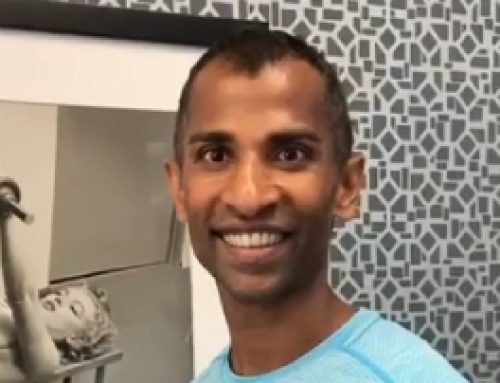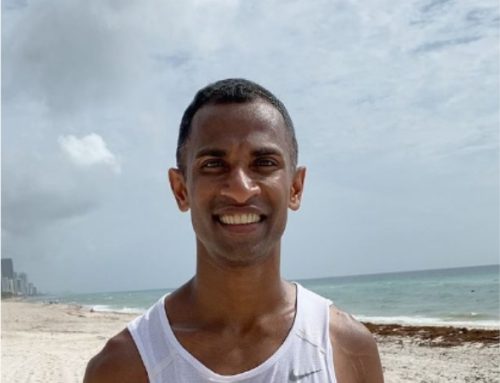The Center for Disease Control (CDC) recommends everyone to wear face masks to help prevent the spread of COVID-19. The face masks help stop the spread of respiratory droplets when talking, sneezing, or coughing. Since people may spread the virus before symptoms start, or even if people never have symptoms, wearing a face covering may protect others around you. Face coverings worn by others may protect you from getting the virus from people carrying the virus.
Now that everyone is wearing face masks to avoid spreading COVID-19, many people claim that they are uncomfortable breathing while wearing masks and worry about inhaling too much CO2. The most common complaints I’ve heard are lightheadedness, body aches, and light interrupted sleep.

This article is about understanding what to do after wearing face masks to reset and restore your breathing.
SIDE EFFECTS OF FACE MASKS
Recently, more and more people have expressed their concerns about wearing a face mask all day. Some are claiming that it affects their breathing and makes it difficult to breathe.
According to a Facebook post published April 24, a one-car crash in New Jersey took social media by storm. An SUV driver blamed the collision on his N95 mask. He claimed to police that he lost consciousness because he didn’t get enough oxygen after wearing the mask for many hours.
The face mask might affect the CO2 levels if it’s too tight or it’s made of a nonporous material that makes breathing taxing. But, if you pick the right material and it’s the right fit, you have nothing to worry about. Experts suggest wearing a cloth or a medical mask. The pores in the cloth material will make it easy for the oxygen to pass through.
HOW CAN A FACE MASK AFFECT BREATHING PATTERNS?
When we breathe, statistics show that we take in 20.95% oxygen, 0.93% argon, 0.04% CO2, and 78.09% nitrogen. Oxygen dissolves in the lungs and is absorbed into the bloodstream. Once in the blood, arteries carry it throughout the body to help maintain body cell functions. CO2 is a by-product of these cell functions and the blood carries it back to the lungs for releasing it out of the body (through breathing).
According to one particular study published in the RC Journal, wearing a face mask even while resting or exercising still forces people to put more effort into breathing. When the proper amount of oxygen is not inhaled, the body uses different mechanisms to compensate: breathing rate and breathing volume increases, blood pressure increases, and the heart rate increases – all to inhale enough oxygen to maintain its functions. When there is a significant oxygen deficiency, the body automatically re-routes the blood that is carrying oxygen. Blood vessels providing oxygen to extremities of the body become restricted and the blood vessels providing oxygen to the critical organs of the body like the brain, spinal cord and heart expand.
Tight face masks could put a strain on the inhaling process:CO2 can’t be pushed out fast enough for enough oxygen to be inhaled. So, people end up inhaling most of the CO2 they just exhaled.
According to a PubMed study, it’s possible to experience a drastic change in breathing pattern from or onasal to oral breathing depending on the type of mask that is used. This shift in breathing pattern is not healthy for the body. Another PubMed report supported the same results, claiming N95 face masks can put pressure on the exhalation valves. For certain individuals, drawing air with a face mask can become a taxing process and trigger asthma and anxiety, especially patients with breathing difficulties, stated Daily Mail.
WHAT HAPPENS WHEN YOU BREATHE YOUR OWN CO2?
Although CO2 is a natural by-product we inhale on a daily basis, inhaling it in excessive amounts could pose a threat, advises the National Institutes of Health. Some possible negative effects include:
- Seeing double
- Vertigo
- Headache
- Dizziness/Lightheadedness
- Neck tension or headaches
- Lack of focus
- Loss of consciousness
HOW TO RESET YOUR BREATHING PATTERN
To restore a healthy breathing pattern, breath out all the air from your lungs and stomach (you could blow into a balloon for maximum effect) and inhale through the nose with the lower ribs remaining “down/depressed”. Do at least a minimum of 10 full breaths at least 5 times a day. This breath exercise will also help you with any aches and tightness in your body as you will be bringing in more oxygen to your body.
If you are interested in learning more about different aspects of health or up-leveling your health, connect with me via https://navinhealth.com and follow me on social media.
Medical disclaimer: This page is for educational and informational purposes only and may not be construed as medical advice. The information is not intended to replace medical advice offered by physicians.
REFERENCES
https://www.facebook.com/LincolnParkPoliceDepartment/posts/1171691036506303
https://ethanolrfa.org/wp-content/uploads/2016/02/Module-2-Handout-How-Inhaled-CO2-Affects-the-Body-%E2%80%93-Fact-Sheet.pdf
http://rc.rcjournal.com/content/63/11/1350
https://www.dailymail.co.uk/news/article-8332037/People-lung-conditions-NOT-wear-face-masks-makes-hard-breathe.html
https://pubmed.ncbi.nlm.nih.gov/6816769/
https://toxtown.nlm.nih.gov/chemicals-and-contaminants/carbon-dioxide
https://www.health.com/condition/infectious-diseases/coronavirus/does-wearing-face-mask-increase-co2-levels
https://pubmed.ncbi.nlm.nih.gov/23108786/


